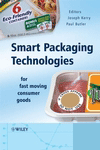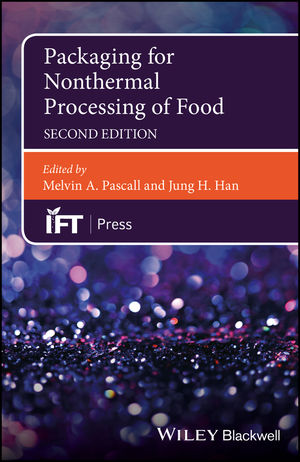Q&A: Coating & Laminating
Spotlight on Coating & Laminating Machinery
Giancarlo Caimmi of Nordmeccanica offers his expertise on the coating and laminating process.


|
| Duplex Combi Horizontal 2 - High performances laminator and coater for water-based adhesives lamination and in-register coating |
Q: What is the process involved with coating onto flexible film substrates? Laminating?
Caimmi: I think a short introduction to the industry terminology may help. The coating process is all about the deposition of a fluid onto a substrate. It is a continuous process handling webs rewound in rolls. It is an evolution of print where the ink has been substituted by a fluid compound with specific characteristics. The compound can be either glue (adhesive) or just a pure coat.
In the case of the adhesive, it is all about what kind of adhesive and for which application. It can be an adhesive for lamination, where the process will follow on the same machine by laminating a second web to the first one (the coated one). Or it can be an adhesive for some other sort of application that does not require a second web to be laminated to the first one. The latter is the case with applications such as heat seal, cold seal and pressure-sensitive adhesives. Such are adhesives for specific applications that have little- to no reaction in normal conditions, but will be triggered to adhere to something else by factors such as temperature or pressure. Think to labels, lids and other flexible packaging-related applications.
The pure coating process instead is about depositing a chemical compound that will add some characteristic or value to the coated web. By coating a web it will be possible to improve the barrier (PVDC but as well new nano-technology coating); protect a print by lacquering a protective layer on the top of it; improve graphic effects by coating a matt or gloss varnish, in register; eliminate condensations inside wet food bags (anti-fog); preparing the web for something else, primers, etc.
Q: How do you feel the industry can improve in the coating and laminating sector?
Caimmi: Every year we can witness new evolutions and trends, new applications and technologies. Every player pays its best efforts to bring innovation and new ideas. This is definitely what makes our industry such a fascinating one. How can we improve then?
If I am asked such question, I will immediately focus my reply on performances. This is really the territory that makes a business successful. Performance nowadays is a little different with respect to what was intended a few years ago. The ‘What is the speed?’ kind of question has evolved into the ‘How to perform better?’ target. Performance is a complex concept, and machine speed is just a part of it. Once technology matures, the only way to properly venture into the performances territory is to work 360 degrees around the process. At very basic levels, a simple speed increase may produce results. Once the level of the process evolves, then there is no way but to work around all influencing factors. Therefore, it is about speed, but it is also about scrap reduction, energy saving, quality improvement, etc.
How do you raise the bar when you are already at a good level? Here is the point, and quality companies have already focused on it: cooperation along the value chain. In order to get at the very pick, there is no way but to work beside your partners, suppliers, customers and evolving the process to the finest detail. Specifically to the coating-laminating process, cutting-edge results can be achieved by working out every fine detail: machine design; web performances; coating formulation; deep knowledge of the final application.
At basic levels there will be little- to no interference between different areas of the process, but at top levels, every factor will influence each other in some way.
Q: What is your most popular type of film coating? In what type of application is it typically used?
Caimmi: Specifically in North America, the most appealing process associated with coating onto flexible substrates is definitely in-register coating. The trend is global, but affects North America more than other areas.
The most appealing to converters, from my perspective, means the process recording the highest number of new installations. While lamination – and specifically solventless lamination – holds on a strong growing rate, in-register coating has definitely witnessed the higher growing rate. It all started with in-register cold seal. It is about applying an adhesive (water-based) on the opposite side of the print and in register with it. Cold seal will allow users to seal the package for thermal-sensitive products such as chocolate and ice cream, with no need to melt the sealant layer of the package. This technology was historically taken care by converting in line to printing presses. Nordmeccanica first introduced the off-line, in-register coating in Europe in the late ‘80s. At that time it really meant venturing into a risky territory. Technology in electronics, drives, motors, PLCs, register systems, was really primordial once seen with modern eyes. Nevertheless, it was possible to help converters to improve their productivity and reliability by releasing the press from the in-line duties. It took a lot of efforts and creativity but it was done.
More than 25 years have gone by since that era. Today, accuracy of digital vector systems for motors and drives, reliability in electronics and improvements in machine design allowed for incredible developments both in in-register accuracy and in productivity and scrap reduction.
To make the results even more appealing, Nordmeccanica just released a proprietary system, developed in cooperation with Siemens. This new release allowed reducing scrap rate and productivity to incredible levels. The list of processes requiring in-register application onto a previously printed roll has been extended to anti-fog coating; matt-gloss lacquering; bar code corrections; single-color inside the bag promotions and more.
Q: What is your most popular type of laminating for films? In what type of application is it typically used?
Caimmi: In North America the most significant growing rate is that of solventless lamination. The technology, while requiring properly designed machinery, features the most operator-friendly approach, limits the investment on capital equipment and allows for very low energy consumption and no emissions.
The advantages of solventless lamination are the real motivation about the growing rate, nevertheless there are applications requiring more “traditional” technologies such as water based-adhesives and solvent-based adhesives. Specifically, I refer to segments as retort, sterilization and pasteurization; for such applications, the thermal stress caused to the pouch is better absorbed by more temperature-stable adhesives. Therefore, once we have excluded the case of this high-temperature process, solventless remains the converter’s choice for every other flexible packaging-related lamination.
Q: Are there any trends you see developing in coating and laminating? Has your company been working on any new developments?
Caimmi: Nordmeccanica has introduced an impressive number of innovations, real industry-changing milestones. Just to name a few: the patented 5-rollers coating head for solventless adhesives; the family of compact laminators: Simplex and Combi 3000; the revolutionary web handling technology for the most demanding applications in the industry; the integrated design for machines configured to handle at the highest performances in the industry water and solvent based coatings; and counting. Innovation has been developed sometime following industry requirements and sometime bringing entirely new concepts.
With that being said, we are definitely in the hot spot to sense industry trends. With over 270 coaters/laminators delivered every year to the industry, we are facing all of the most challenging projects and are receiving the most significant number of feedback on trends. Rating the hottest ones is not an easy task; nevertheless, on a global scale we can focus on a few – energy saving; automation; scrap reduction; multi-ply lamination.
On multi-ply lamination we recently introduced the 3-ply solventless laminator, One Shot. We are working side by side with other industry leaders on a number of innovations that will benefit the industry for years to come: laminating technologies featuring shorter curing time; new coating technologies for improved performances; laminating technologies for new generations of inks and more.
Looking for a reprint of this article?
From high-res PDFs to custom plaques, order your copy today!








